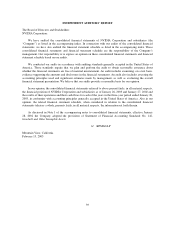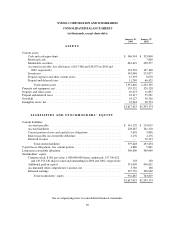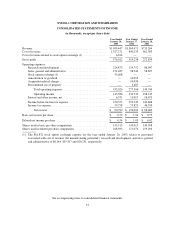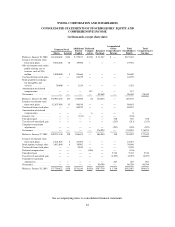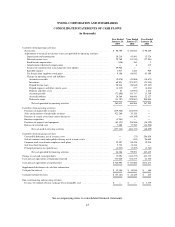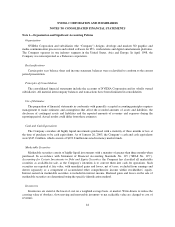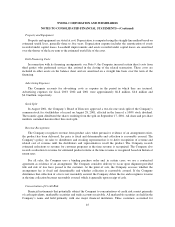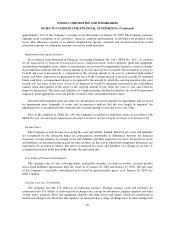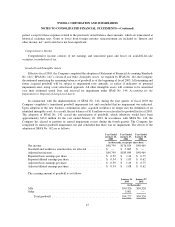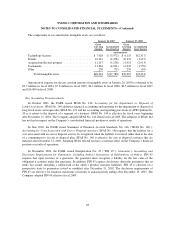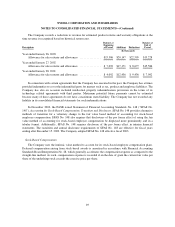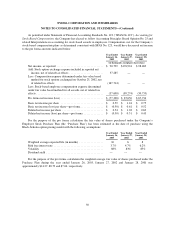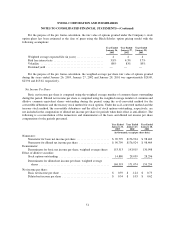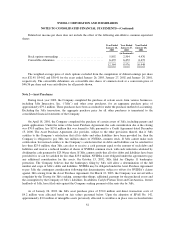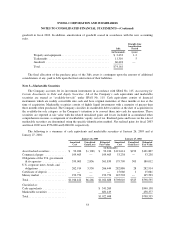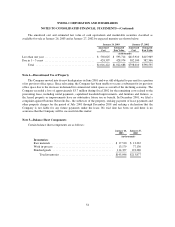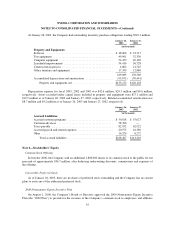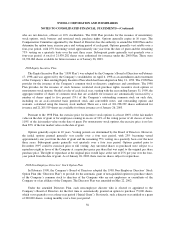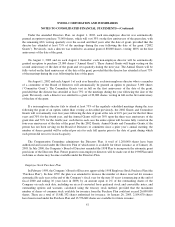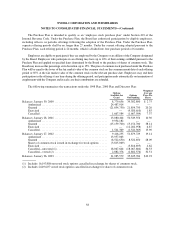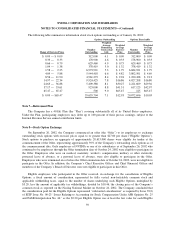NVIDIA 2003 Annual Report Download - page 51
Download and view the complete annual report
Please find page 51 of the 2003 NVIDIA annual report below. You can navigate through the pages in the report by either clicking on the pages listed below, or by using the keyword search tool below to find specific information within the annual report.
NVIDIA CORPORATION AND SUBSIDIARIES
NOTES TO CONSOLIDATED FINANCIAL STATEMENTS—(Continued)
The Company records a reduction to revenue for estimated product returns and warranty obligations at the
time revenue is recognized based on historical return rates.
Description
Balance at
Beginning
of Period Additions Deductions
Balance at
End of
Period
(In thousands)
Year ended January 26, 2003
Allowance for sales returns and allowances ............... $15,586 $20,147 $22,505 $13,228
Year ended January 27, 2002
Allowance for sales returns and allowances ............... $ 7,092 $17,171 $ 8,677 $15,586
Year ended January 28, 2001
Allowance for sales returns and allowances ............... $ 4,092 $12,436 $ 9,436 $ 7,092
In connection with certain agreements that the Company has executed in the past, the Company has at times
provided indemnities to cover the indemnified party for matters such as tax, product and employee liabilities. The
Company has also on occasion included intellectual property indemnification provisions in the terms of its
technology related agreements with third parties. Maximum potential future payments cannot be estimated
because many of these agreements do not have a maximum stated liability. The Company has not recorded any
liability in its consolidated financial statements for such indemnifications.
In December 2002, the FASB issued Statement of Financial Accounting Standards No. 148 (“SFAS No.
148”), Accounting for Stock-Based Compensation, Transition and Disclosure. SFAS No. 148 provides alternative
methods of transition for a voluntary change to the fair value based method of accounting for stock-based
employee compensation. SFAS No. 148 also requires that disclosures of the pro forma effect of using the fair
value method of accounting for stock-based employee compensation be displayed more prominently and in a
tabular format. Additionally, SFAS No. 148 requires disclosure of the pro forma effect in interim financial
statements. The transition and annual disclosure requirements of SFAS No. 148 are effective for fiscal years
ending after December 15, 2002. The Company adopted SFAS No. 148 effective fiscal 2003.
Stock-Based Compensation
The Company uses the intrinsic value method to account for its stock-based employee compensation plans.
Deferred compensation arising from stock-based awards is amortized in accordance with Financial Accounting
Standards Board Interpretation No. 28, which generally accelerates the compensation expense as compared to the
straight-line method. As such, compensation expense is recorded if on the date of grant the current fair value per
share of the underlying stock exceeds the exercise price per share.
49


